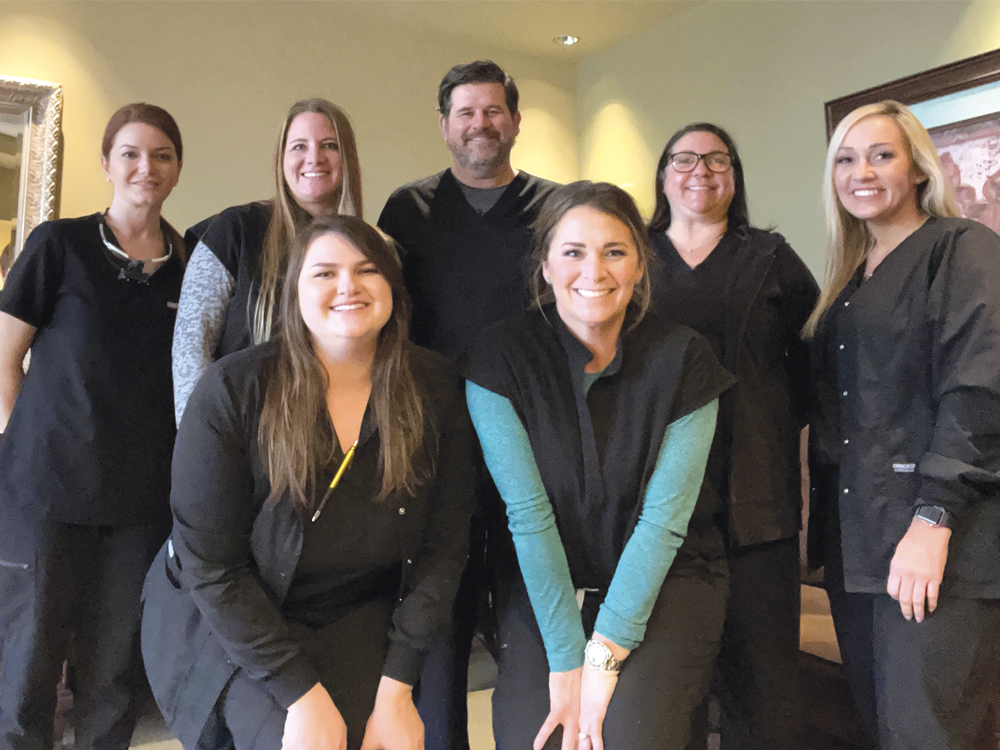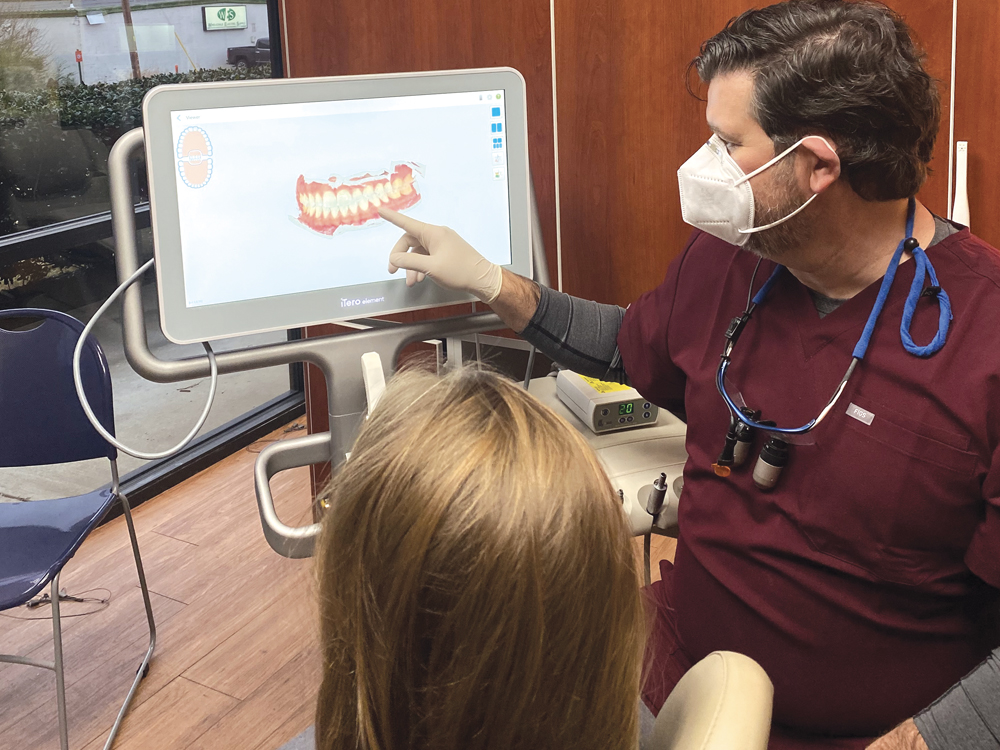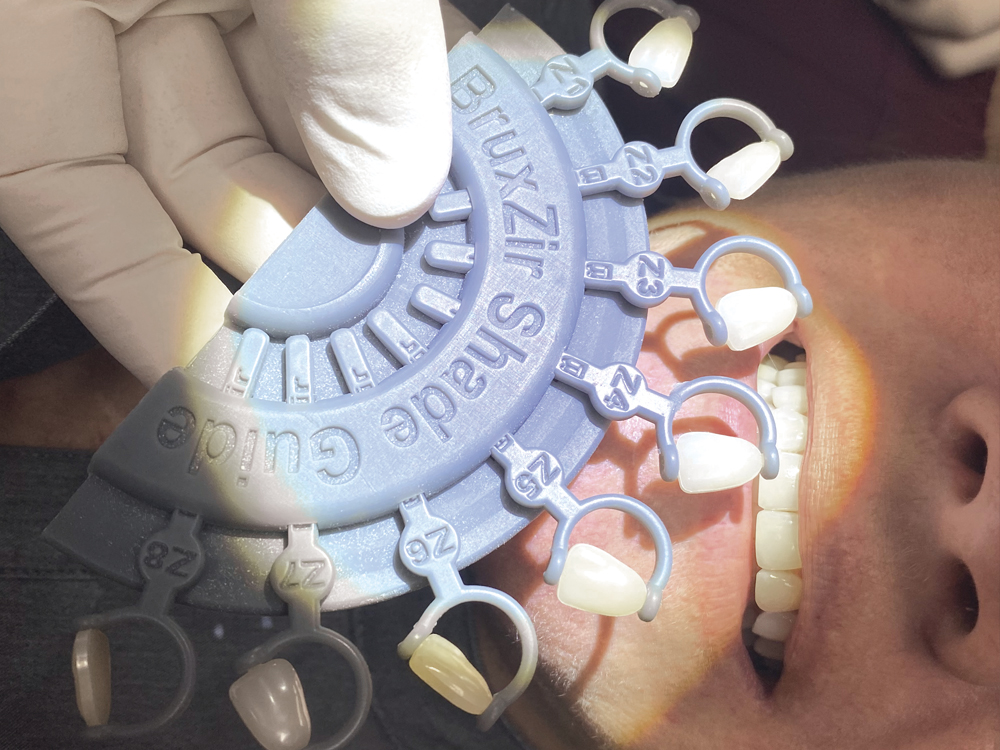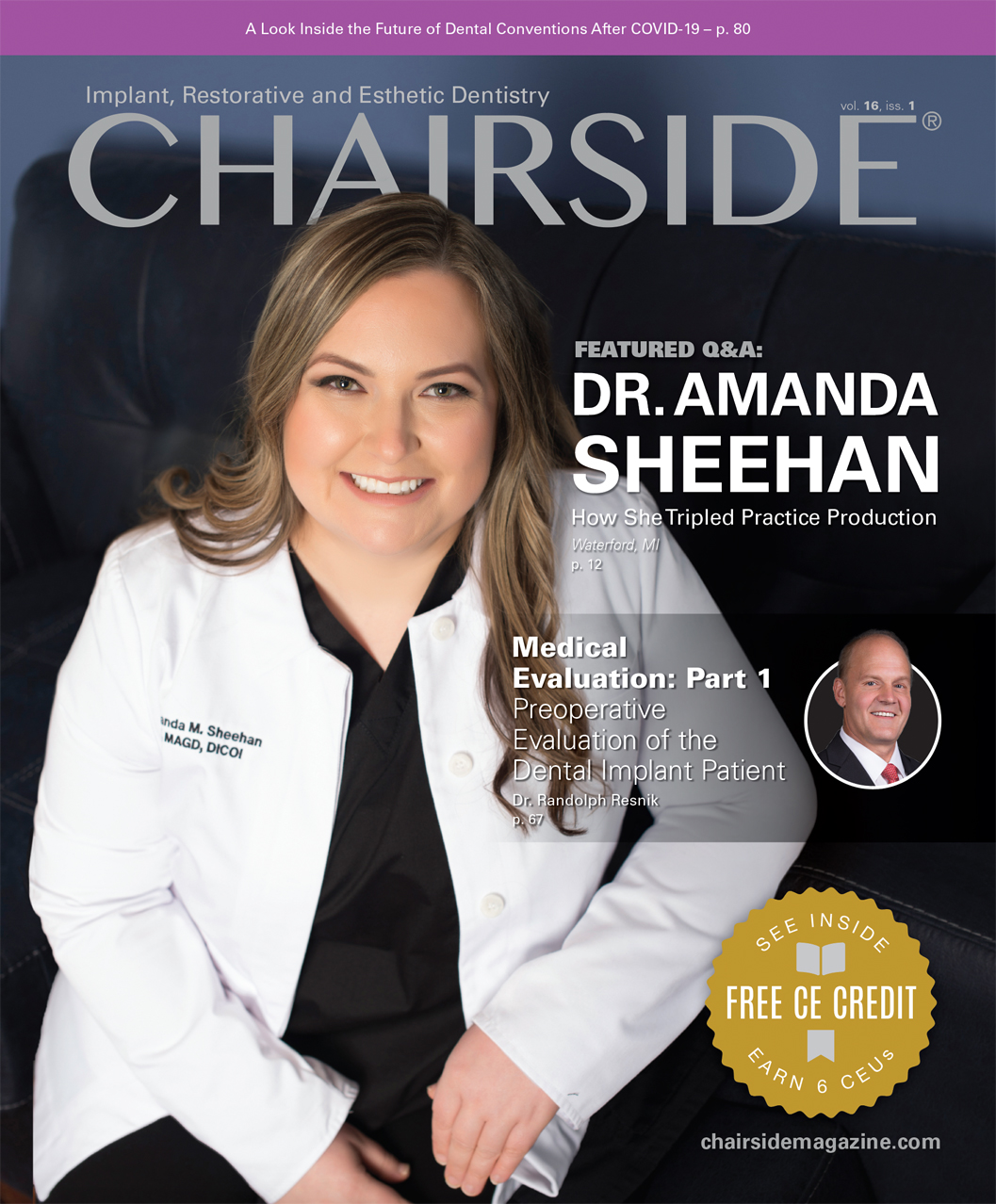Customer Spotlight: Dr. Kevin Jones

While Dr. Kevin Jones practices in the big city of Little Rock, Arkansas, he was born and raised in a small town just an hour away. In fact, some of his patients are the parents of kids who he grew up with, while others are recent transplants from his hometown to Little Rock. Regardless of where the patients originated, Dr. Jones believes that maintaining that small-town atmosphere in his practice is key to his success.
Thanks to an active stream of Google reviews, Dr. Jones’ online name recognition is strong. The real success, of course, is in providing a dental experience that keeps patients coming back. And he and his team focus on just that, with a philosophy that he summarizes simply: “Treat people right and do the right thing.”
Now in his 20th year of practice, Dr. Jones leads a team of seven staff members at the office that he purchased soon after graduating from the College of Dentistry at the University of Tennessee Health Science Center. In this Q&A, he shares how he secures those top-notch Google reviews, what led him to switch to digital impressions and why he chooses BruxZir® Zirconia for his patients.
CHAIRSIDE® MAGAZINE: As a private practitioner, you have so many loyal, happy patients, as shown by your rating of 4.9 stars on Google reviews. How do you do it?
DR. KEVIN JONES: Well, just by simply asking our patients to write a review. When there’s a moment or an opportunity — for instance, a patient compliments us on something or just expresses gratitude — we just ask. We let them know: “Hey, thank you for saying that. New patients are the lifeblood of our practice, and one of the ways that most people find dentists now is online. So would you mind leaving us a short review on Google?”
And overwhelmingly people say, “Absolutely, I can.”
CM: Does the process come naturally to you?
KJ: Asking goes against my nature a little bit. But over time that hesitancy has worn off. I think our patients understand our authenticity in asking. And so often staff members ask — they’ve kind of taken the reins in that area. They see those opportunities.
The reviews are fun for us, too. During each staff meeting, we read them out loud and go through the ones that have come through most recently. And it’s just a good celebration moment, as well as a reinforcement for our team to keep asking. When new patients come in, we track how they first learned about our practice, and more often than not it’s through Google. So having positive Google reviews is a big avenue for referrals. Current patients just might not realize it until you ask.
The other thing that’s probably ramped up our Google reviews in the last few years is our use of the patient communication system Weave. Our staff loves it. After a patient leaves, Weave sends them a text message providing the opportunity to leave us a review. For scheduling, a staff member can send a text message to 10 people at once saying that we have an opening, and immediately someone will call back and take that appointment. So it’s a really nice service that helps us do our job better.
CM: As part of your services, you do digital impressions. What led you to start using an intraoral scanner?
KJ: The thing that I do best is being chairside with patients, taking care of them. So several years ago, I decided to switch to an iTero® scanner (Align Technology, Inc.; San Jose, Calif.). And it’s just a great workflow. I love the digital process, especially because it saves time. We use our iTero scanner every day for different services and send digital impressions directly to Glidewell. Within 30 minutes, I receive a message confirming the scan was received and everything looks good. And then the crown arrives here in two or three days. The $20 savings for each model-free crown is a nice perk for my all-ceramic cases, too.

The digital workflow at Dr. Kevin Jones’ practice includes an iTero scanner, which he and his team use every day. Sending digital impressions directly to Glidewell yields faster results for his patients.
CM: In the past few years, you also have switched to prescribing more BruxZir Zirconia cases. Why do you choose solid zirconia for patients?
KJ: When I first started prescribing BruxZir crowns, I used them especially on second molars — situations where I just didn’t have enough room for a PFM and a patient didn’t want a gold crown. BruxZir Zirconia served as a strong, durable solution, and I didn’t have to reduce the tooth so much that we were getting into complications — maybe having to do a root canal or running into postoperative sensitivity because of having to prep a little too much. So BruxZir Zirconia was a material that let me be more conservative and feel good that the crown was going to hold up.
The thing that was a little challenging with early BruxZir crowns was the shading. It really didn’t matter a whole lot in the back. We could get close enough that it would blend for those second molars. Then, when BruxZir Esthetic Zirconia was developed, that changed the game. Since then, we’ve had a lifelike material that rivals some of the other materials as far as how they look, especially in the esthetic zone, but the restorations are still durable. And I can still be really conservative. So that’s what I like about BruxZir Zirconia: that I have the ability to conserve tooth structure and, now, with BruxZir Esthetic Zirconia, that I can offer a translucent, natural-looking option for patients.
CM: Last year, you were chosen as a clinical evaluator for a prototype of the new BruxZir Zirconia Shade Guide, in advance of the shade guide’s official debut in mid-2021. What were your takeaways from using this new zirconia-specific guide to shade-match BruxZir cases?
KJ: No. 1, I liked the simplicity of it. When I received the BruxZir Shade Guide, I was glad to see it did not have a plethora of shades to choose from. And the shade tabs themselves looked great. I noticed the glazing of the BruxZir tabs replicated the surface of the final BruxZir restorations really well. The tabs were also really easy to hold and manage chairside. I liked that the tabs rotated in their holders because that feature allowed me to position the shade tab very close to the patient’s tooth.

Dr. Jones is one of a few doctors who were chosen to evaluate prototypes of the BruxZir Zirconia Shade Guide in 2020. Shown here, he uses the shade guide to achieve a perfect match for an anterior crown.
CM: Thinking back on dentistry amid COVID-19, how have you and your team overcome the challenges? What have you had in mind for leading your team, and reassuring them and your patients?
KJ: When all this first started, I told my team: “Listen, I don’t know what I don’t know. But what I do know is that I’ll turn over every rock and stone until I figure out what we need to do to keep us as well as our patients safe.” Through a ot of reading and good guidance from the American Dental Association and the Arkansas State Dental Association, we developed protocols for health and safety. We put a lot of safety guidelines in place and combined those new measures with everything we were already doing before COVID-19. We also bought new equipment, including extraoral suction systems to contain aerosols when we’re working and air filters that turn over the air every 15 minutes here in the office.
So we’re implementing all these additional safeguards, and then we’re conveying these protocols to patients. We’re making sure we tell them about all of our precautions. Patients have told me they appreciate what we’re doing to make them feel safe to come in.
CM: Thanks for sharing your thoughts with us today.


